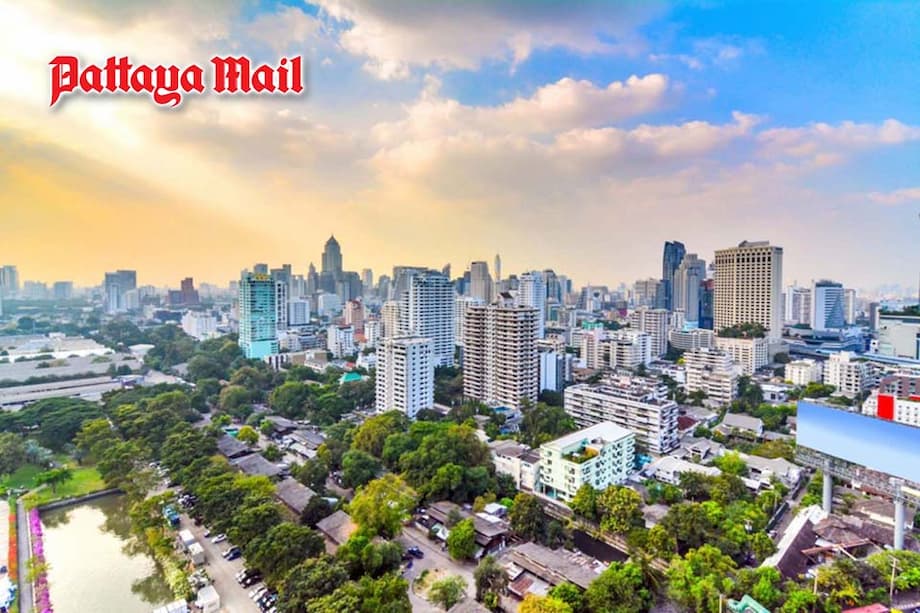Thailand’s Housing Oversupply: A Looming Challenge for Pattaya and Greater Bangkok
Thailand’s real estate sector, long considered a pillar of the nation’s economy, is facing a significant challenge: a mounting oversupply of housing in key areas of Greater Bangkok and the popular coastal city of Pattaya. Industry experts warn that this glut of unsold homes and condominiums could take three to four years—or even longer—to clear, with far-reaching implications for developers, investors, and homebuyers alike.
- Thailand’s Housing Oversupply: A Looming Challenge for Pattaya and Greater Bangkok
- Where Is the Oversupply Most Severe?
- What’s Driving the Oversupply?
- How Are Developers and Investors Responding?
- Government Policies and the Road to Recovery
- Market Segmentation: Winners and Losers
- Broader Implications for Thailand’s Economy
- In Summary
At the heart of the issue are 15 residential zones across Bangkok’s outskirts and corridors near Pattaya, where thousands of units remain unsold. The situation is compounded by broader economic headwinds, changing buyer preferences, and evolving government policies. This article explores the causes, consequences, and potential solutions to Thailand’s housing oversupply, drawing on expert analysis, market data, and the latest developments in the property sector.
Where Is the Oversupply Most Severe?
The oversupply is concentrated in specific districts and corridors, both in and around Bangkok and extending toward Pattaya. According to the Thai Real Estate Research and Valuation Center at Agency for Real Estate Affairs (AREA), the most affected areas include:
- Nawamin
- Klong Rangsit
- Lam Luk Ka
- Srinakarin-Thepharak
- Pak Nam
- Bang Na-Trat
- Pracha Uthit
- Ekachai-Bang Bon
- Mahachai-Saetthakit
- Bang Bua Thong
- Lat Lum Kaeo
In these zones, the bulk of unsold inventory consists of townhouses and condominiums priced under 3 million baht (about $80,000), often located far from city centers. These properties are mismatched with the purchasing power and preferences of local residents, leading to sluggish sales and a growing stockpile of available units.
Spotlight on Pattaya: A Tale of Two Markets
Pattaya, a city synonymous with tourism and beachfront living, presents a complex picture. On one hand, the city has seen a surge in new condominium launches—nearly 7,000 units in the first half of 2024 alone, according to Colliers International Thailand. This is the highest figure in three years and far exceeds the market’s historical absorption rate. On the other hand, the luxury segment, especially prime beachfront condos, continues to attract strong demand from both Thai and international buyers, particularly from China and Russia.
Phattarachai Taweewong, research director at Colliers, notes that while areas like Jomtien and Wong Amat remain popular, the sheer volume of new supply risks tipping the market into a prolonged glut. “The market should not exceed 4,000 new units annually, yet 6,997 units have already been introduced in the first half of this year,” he cautions.
Meanwhile, the average take-up rate for Pattaya condos stands at 76%, with some areas like Pattaya City reaching as high as 87%. However, the rapid pace of new launches threatens to outstrip demand, especially in mid-level and budget segments.
What’s Driving the Oversupply?
Several interconnected factors are fueling the oversupply crisis in Pattaya and Greater Bangkok:
- Economic Slowdown and High Household Debt: Thailand’s economy has faced sluggish growth, with household debt now exceeding 90% of GDP—up from 60% before the 1997 Asian financial crisis. This high debt burden limits buyers’ ability to secure mortgages, especially for properties priced under 3 million baht.
- Limited Access to Finance: Banks have tightened lending criteria, particularly for middle- and lower-income buyers. The loan rejection rate for buyers of affordable homes is as high as 50% in some areas, according to Khaosod English.
- Mismatch Between Supply and Demand: Developers have continued to launch new projects in peripheral areas, often without adequately assessing local demand or buyer preferences. Many new units are located far from mass transit or employment hubs, making them less attractive to potential residents.
- Changing Demographics and Preferences: Younger buyers and urban professionals increasingly prefer condos with modern amenities and good transport links, while retirees and expatriates seek beachfront or resort-style properties. The bulk of unsold inventory does not align with these trends.
- Tourism Dependency: Pattaya’s property market is closely tied to the tourism sector. While the return of international visitors has boosted demand for luxury condos, mid-market and budget segments remain vulnerable to fluctuations in tourist arrivals and global economic conditions.
Expert Perspectives on the Crisis
Mr. Sophon Pornchokchai, Chairman of AREA, emphasizes the need for caution:
“Developers are advised to avoid launching new projects in these saturated zones unless they offer better designs or greater value to attract buyers, as slow sales and potential project failures are risks.”
Analysts at KKP Research and SCB Economic Intelligence Centre warn that unless policymakers implement reforms to boost incomes and attract foreign investment, Thailand could face a “lost decade” of stagnant property values, similar to Japan’s experience in the 1990s.
How Are Developers and Investors Responding?
The oversupply crisis is forcing developers to rethink their strategies. Some, like SC Asset Corporation, are diversifying into non-property businesses such as hotels, industrial estates, and even overseas apartment rentals. Others are focusing on recurring-income ventures and scaling back new residential launches.
For investors, the picture is mixed. While prime locations in Bangkok and Pattaya still offer attractive rental yields and long-term appreciation potential, oversupplied areas present significant risks. Foreign buyers, particularly from China and Russia, continue to drive demand for luxury condos, but mid-market and budget segments face higher vacancy rates and slower capital gains.
Rental Market: A Silver Lining?
Despite the sales slump, Bangkok’s rental market has shown resilience. Rental prices for residential properties have increased by 3% year-on-year, with even higher growth in areas near mass transit and commercial hubs. Condominiums make up the vast majority of available rental properties, offering consistent income for landlords and investors. However, the rental market alone is unlikely to absorb the entire oversupply, especially in peripheral locations.
Government Policies and the Road to Recovery
The Thai government has introduced various measures to stimulate the property market, including adjusting loan-to-value ratios and reducing transfer and mortgage fees. However, these policies have primarily benefited high-end buyers and investors, offering little relief to the broader market.
Experts suggest that more targeted interventions are needed, such as:
- Expanding access to finance for middle-income buyers
- Reducing land and property taxes for affordable housing
- Encouraging foreign investment through controlled liberalization of ownership rules
- Investing in infrastructure and mass transit to boost the attractiveness of peripheral areas
Political developments also play a role. The return of the Shinawatra family to power has raised hopes for renewed infrastructure investment and populist policies that could stimulate housing demand. However, concerns remain about political stability, public debt, and the effectiveness of government interventions.
Market Segmentation: Winners and Losers
The oversupply crisis is not uniform across all segments of the market. While budget and mid-level condos in peripheral areas struggle with high vacancy and slow sales, luxury beachfront properties in Pattaya and prime condos in central Bangkok continue to attract strong demand and command premium prices.
For example, Sansiri’s PTY Residence Sai 1, a luxury beachfront condo in Pattaya, sold out its entire foreign quota within hours of launch, generating 1.85 billion baht in sales. This underscores the enduring appeal of high-quality, well-located properties, even amid broader market challenges.
Investor Advice: Proceed with Caution
Industry experts advise investors to focus on quality and location rather than volume. Properties in established neighborhoods with good transport links, amenities, and strong rental demand are likely to outperform oversupplied areas. Due diligence is essential, especially when buying off-plan or from smaller developers.
Broader Implications for Thailand’s Economy
The real estate sector is a major driver of Thailand’s economy, supporting millions of jobs and contributing significantly to GDP. A prolonged downturn could have ripple effects across construction, finance, and related industries. However, the market has demonstrated resilience in the past, rebounding from crises such as the 1997 Asian financial crash and the COVID-19 pandemic.
Looking ahead, the path to recovery will depend on a combination of market-driven adjustments, government policy, and broader economic trends. Developers who adapt to changing buyer preferences, focus on quality, and manage supply prudently are best positioned to weather the storm.
In Summary
- Thailand faces a significant oversupply of housing in key areas of Greater Bangkok and Pattaya, with thousands of unsold units concentrated in peripheral zones.
- The glut is driven by economic slowdown, high household debt, limited access to finance, and a mismatch between supply and demand.
- Pattaya’s luxury condo segment remains robust, but mid-market and budget properties are at risk of prolonged vacancy and price stagnation.
- Developers are diversifying and scaling back new launches, while investors are advised to focus on quality and location.
- Government interventions have had limited impact so far; more targeted policies are needed to stimulate demand and absorb excess supply.
- The real estate sector’s recovery will depend on economic reforms, infrastructure investment, and the ability of developers to adapt to changing market dynamics.












